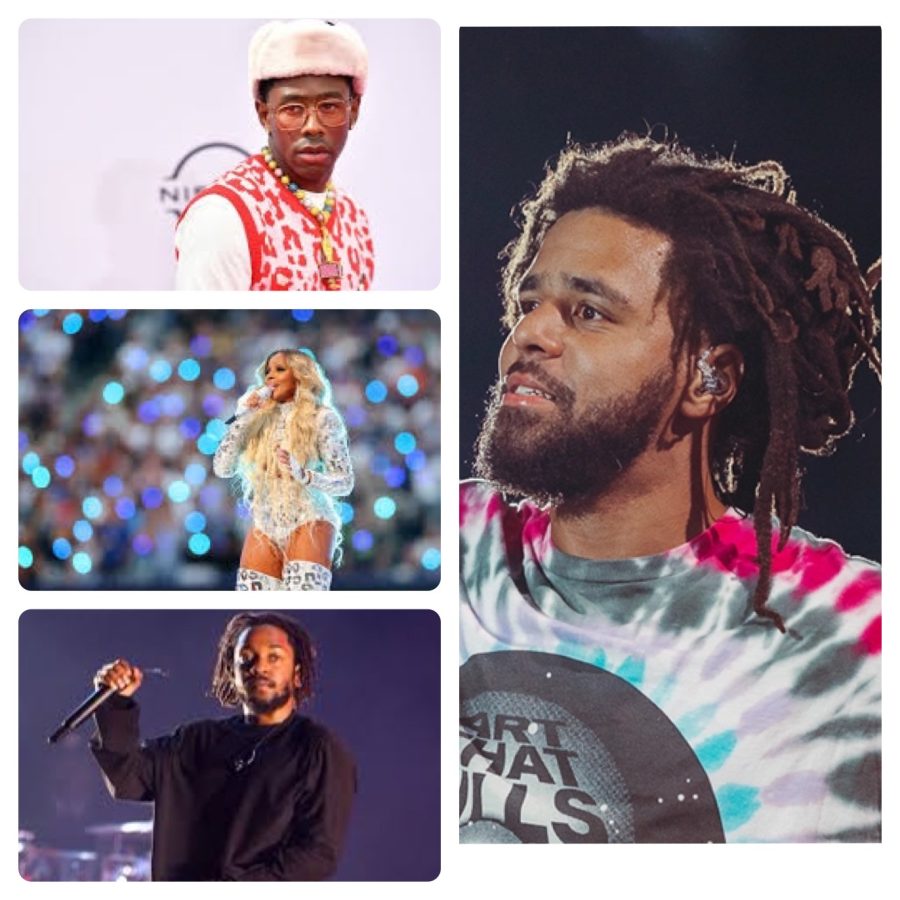Does Rap get a Bad Rap?
Courtesy of Google Images
The National Football League, NFL’s, annual Super Bowl halftime show was inspired by West Coast rap and hip hop. The show was headlined by music legends Kendrick Lamar, Mary J. Blige, Dr. Dre, Eminem, Snoop Dogg, and 50 Cent, who paid tribute to California pride through their sets. The show received an outpour of love and support from viewers as it featured 90’s hits. Another reason for the support is that it represented the influence Black artists have in the industry, considering all of the performers besides Eminem are Black. The effect of the event was further amplified since it took place during Black History Month.
There has been a misinterpretation of the messages presented in music created by Black artists, particularly rappers. These misconceptions eventually have led to the formation of stereotypes. Without understanding the depth of lyrics, some people assume that rap is meaningless and doesn’t represent anything good. Black Student Union president and senior, Carrington Sneed, recognizes hip hop as a genre that started as entertainment, to later become a way for the artists to express the emotions and struggles they face in regards to being members of an oppressed race.
“Hip hop was originally played as dance music or when you’re out with friends in the neighborhood. But over time hip hop became a form of resistance against the status quo. Protests resistance have been common elements of the genre, you know, allowing us to communicate our anger towards racial injustice and marginalization that we experience every day,” said Sneed.
While hip hop is a major part of Black culture, it doesn’t define those who are part of the community. If anything, it’s the other way around. With every new music style that emerges each decade, artists are able to add other genres besides rap into their work.
“Hip hop is Black roots, but it also has incredibly diverse sounds in a rich history influenced by Black artists. Throughout the 70’s and 80’s, there were funk and rock elements popularized by artists like Grandmaster Flash and the Sugar Hill gang. But in the 90’s You’d hear more of a smooth jazz influence, brought on by the Wu Tang Clan. Hip Hop today still keeps the core elements but is rapidly changing to the influence of rappers. Like JPEG mafia, or Kendrick Lamar,” said Sneed.
Sneed believes that hip hop should be taught as a part of Black History in schools since it is incredibly important to the culture.
“Hip hop and rap are unfortunately still stigmatized genres of music but I think we’ve made huge progress over the last decades in normalizing the genres. We can achieve even more progress if we teach about hip hop and rap in schools, because it is absolutely a part of Black History,” said Sneed.
The Super Bowl was a tremendous way to show so many people how influential Black artists are to the industry. The influence of gender was also included because Mary J. Blige was the only female performer, allowing for women in the industry to be represented.
“The Super Bowl Halftime Show definitely generated awareness of influence and music represented Black people in extinction. They were able to represent old heads in the rap community. Dr. Dre and Snoop Dogg, Black women with Mary J. Blige, and Black youth with Eminem and Kendrick Lamar. People who aren’t black also acknowledge all these artists and I think this representation helps normalize black people in America and also black music,” said Sneed.
Sophomore, Kyle Okoth, thinks Black musicians represent him as a young black male because he shares common feelings with them through their music.
“Black artists impact and represent me by relating feelings to me and I feel like their music is an outlet for me,” said Okoth.
It is important to realize the diversity of the talents black artists possess. While rap is very important to them, there are other genres that they specialize in. There is an assumption made by some people that black artists only rap, however, there is proof that they are versatile. For example, black rappers like Nelly and Lil Nas X have branched out and collaborated with country artists on songs. R&B is another prominent part of black music culture.
“There’s also R&B artists and a whole bunch of other artists and even country artists,” said Okoth.
Okoth has some popular black artists in mind who have left their mark in the industry.
“I think Tyler the Creator impacted the community. I also think that Kendrick Lamar affects the community as well as J. Cole,” said Okoth.
Acknowledging how rap has impacted not only the black community but also the world as a whole is important and would help remove much of the stigma associated with Black artists. The stereotypes that not only they face, but also those who look up to them. While hip hop has been dubbed with the term inappropriate on many instances by critics, parents, and really anyone who has the ability to make judgments, it is indeed culture, and the more representation is shown, the more accepted. The Halftime Show gave many viewers a sense of nostalgia, transporting them back to their youth, a time in which hip hop was very impactful.

